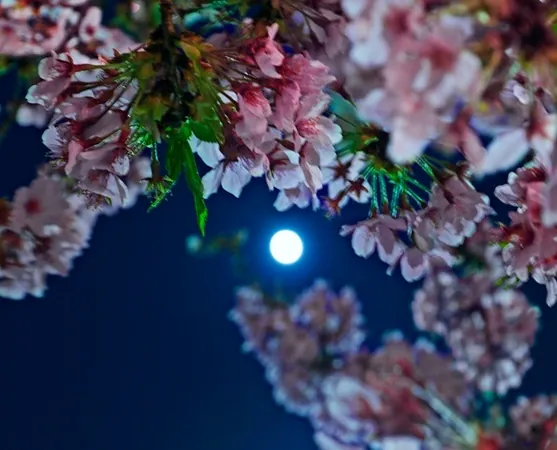
Celestial Wonders: Your Guide to the Week of the April Full Pink Moon
2025-04-11
Author: Wei Ling
Expect an Extravaganza in the Skies!
Stargazers, get ready for an astronomical spectacle! From April 11 to 18, our night skies will feature a dazzling lineup, highlighted by the enchanting Full Pink Moon.
Friday, April 11: Jupiter’s Majestic Show
Post-sunset, gaze towards the eastern horizon to spot the brilliant planet Jupiter as it grips attention in Taurus. It forms a distinct V with the tips of the Bull’s horns—Zeta Tauri and Gamma Aurigae. Just below lies Aldebaran, the alpha star of Taurus, a stunning golden-hued giant.
Tonight is also your chance to witness Jupiter's Great Red Spot! Look through your telescope and catch this massive storm crossing the planet’s surface around 8:45 PM EDT.
Keep your binoculars handy as Jupiter's moon Io makes an appearance, transiting in front of its parent planet around 8:30 PM EDT, followed closely by its shadow around 9:40 PM EDT.
Saturday, April 12: The Enchanting Full Pink Moon
Prepare for the Full Moon at 8:22 PM EDT, known as the Pink Moon! While it might be slightly less impressive in size due to its distance from Earth (making it a 'Micro Moon'), it will still delight sky-watchers as it rises in the east shortly after sunset.
Tonight, Spica, the alpha star of Virgo, will be seen just south of the Moon. Together, they create a mesmerizing scene, perfect for stargazing.
Sunday, April 13: Exploring the Night Sky
The Moon reaches apogee—its farthest point from Earth—at 6:48 PM EDT, standing 252,460 miles away. Although it’s nearly full, it will shift southeast of Spica as it illuminates the sky.
Monday, April 14: Pegasus Takes the Stage
An hour before dawn, the Square of Pegasus emerges in the eastern sky, showcasing its four bright stars. This is a fantastic opportunity for star enthusiasts to spot the open cluster NGC 7243, a hidden gem located in the constellation Lacerta.
Tuesday, April 15: Catch Uranus!
Tonight, Uranus remains visible as it slowly fades into twilight. The ice giant is positioned north of a magnitude 6.8 star in Taurus, which simplifies locating this distant planet with binoculars or a telescope.
Wednesday, April 16: Mercury Meets Neptune
At 3 PM EDT, Mercury will pass close to Neptune, both visible in the early morning hours before sunrise. Mercury shines brightly alongside Venus, making it an excellent chance for a cosmic snapshot!
Thursday, April 17: Antares and the Moon
This morning, the Moon will be just southeast of the red giant star Antares. Known for its contrasting red hue, Antares is significantly brighter than our Sun and stands out beautifully against the backdrop of the Milky Way.
Friday, April 18: Io’s Return!
If you missed Io’s transit earlier in the week, don't fret! Tonight, you can catch it again as it crosses Jupiter’s face, along with its shadow, in the late evening. This captivating display will draw attention from stargazers across the U.S.
With so many celestial events lined up, grab your telescopes and put on your stargazing hats. The cosmos awaits!


 Brasil (PT)
Brasil (PT)
 Canada (EN)
Canada (EN)
 Chile (ES)
Chile (ES)
 Česko (CS)
Česko (CS)
 대한민국 (KO)
대한민국 (KO)
 España (ES)
España (ES)
 France (FR)
France (FR)
 Hong Kong (EN)
Hong Kong (EN)
 Italia (IT)
Italia (IT)
 日本 (JA)
日本 (JA)
 Magyarország (HU)
Magyarország (HU)
 Norge (NO)
Norge (NO)
 Polska (PL)
Polska (PL)
 Schweiz (DE)
Schweiz (DE)
 Singapore (EN)
Singapore (EN)
 Sverige (SV)
Sverige (SV)
 Suomi (FI)
Suomi (FI)
 Türkiye (TR)
Türkiye (TR)
 الإمارات العربية المتحدة (AR)
الإمارات العربية المتحدة (AR)